While cemetery symbolism relating to the mythological or legendary creatures is not all that common, it does exist and includes dragons, gargoyles, the phoenix and more. The “Otherwise Odd” symbolism includes a Cowbellion, Socrates Monkey, gypsies and anything else that is beyond the cemetery norm.

Centaur
The centaur symbolizes lust, with all the brute violence which can reduce mankind to the level of beasts unless counterbalanced by spiritual strength.
Source: Richard Waterhouse, Discovery of Symbols Throughout the Ages, e-Newsletter, July 2007.

Cowbellion
The cow may symbolize membership in various societies, such as the Cowbellion de Rakin Society of Mobile, Alabama. Michael Kraft, the one-eyed Yankee who, as a young man on New Year’s Eve 1830 overdid his celebrating and, with a few of his friends, some cowbells, rakes and hoes, proceeded to awake most of the tiny city and the Mayor as well. His “escapade” led to the founding of the first mystic society, the Cowbellion de Rakin Society, from which all others in Mobile, New Orleansb, St. Louis, Tampa, Pensacola, Fairhope, Montgomery, Birmingham, Biloxi, et al have sprung.
Sources: Sledge, John S., Cities of Silence, MARDI GRAS – MOBILE’S PARADOXICAL PARTY

Dragon
The dragon is a legendary creature with reptilian traits and is one of the most common creatures in heraldry.

Gargoyle
In architecture, and specifically in Gothic architecture, a gargoyle is a carved or formed grotesque with a spout designed to convey water from a roof and away from the side of a building, thereby preventing rainwater from running down masonry walls and eroding the mortar between.
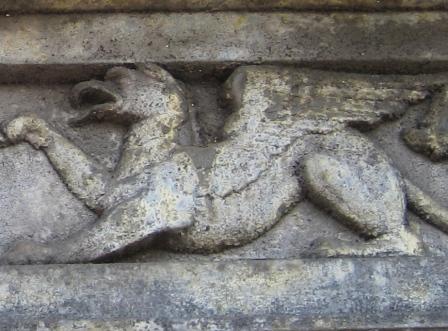
Gryphon, Griffin, Griffon
The Gryphon is a symbol of nobility and guardianship. The Gryphon is a legendary creature with the body, tail, and back legs of a lion; the head and wings of an eagle; and sometimes an eagle’s talons as its front feet.

Gypsies
Gypsies are defined as “persons of nomadic habit of life, whatever their race or origin, but does not include members of an organized group of travelling showmen, or persons engaged in travelling circuses, travelling together as such.”

Legend of Narcissus
In Greek mythology, Narcissus was a hunter from Thespiae in Boeotia who was known for his beauty. According to Tzetzes, he rejected all romantic advances, eventually falling in love with his own reflection in a pool of water, staring at it for the remainder of his life. After he died, in his place sprouted a flower bearing his name, commonly known as the daffodil.
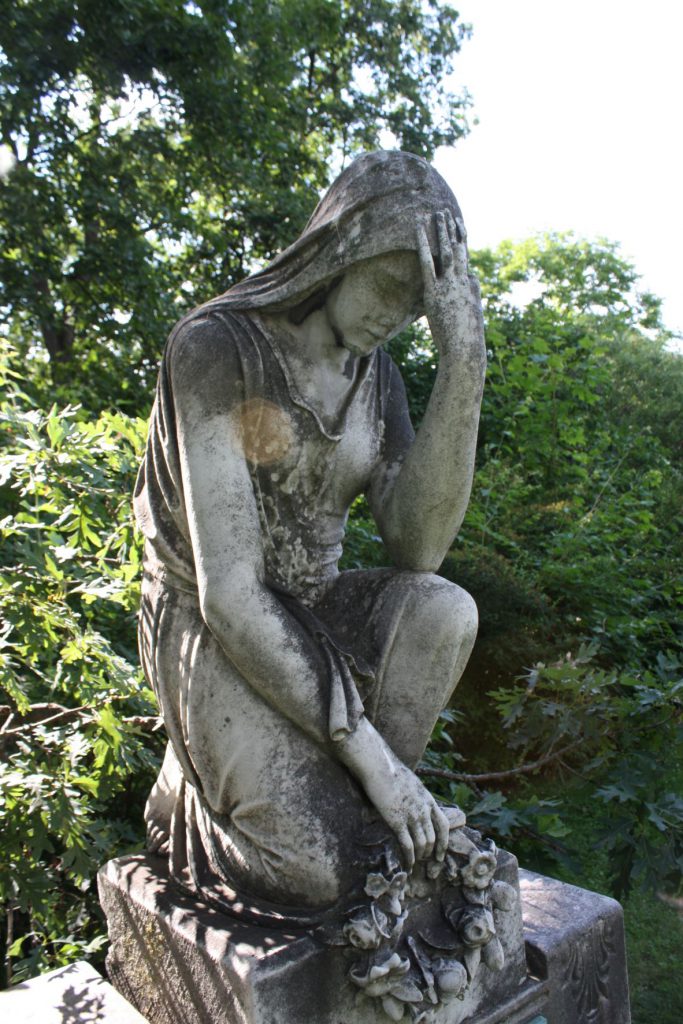
Niobe
According to Greek mythology, Niobe’s seven daughters and seven sons were slain by Apollo and his sister Artemis as punishment for her pride. Niobe turned to stone, brooding over the loss of her children.
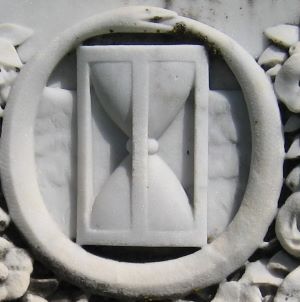
Ouroboros
The Ouroboros symbol is one of the oldest ancient Egyptian symbols in history. The ouroboros is often interpreted as a symbol for eternal cyclic renewal or a cycle of life, death, and rebirth. The skin-sloughing process of snakes symbolizes the transmigration of souls, the snake biting its own tail is a fertility symbol in some religions, and the tail of the snake is a phallic symbol, the mouth is a womb-like symbol.

Phoenix
The phoenix is a long-lived bird associated with Greek mythology that regenerates. A phoenix obtains new life by arising from the ashes of its predecessor. Some legends say it dies in a show of flames and combustion, others that it simply dies and decomposes before being born again.
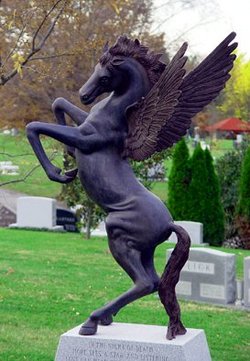
Pegasus
Pegasus in a cemetery symbolizes resurrection, renewal and rebirth.
Pegasus is a mythical winged divine horse, and one of the most recognized creatures in Greek mythology.
Photo Courtesy Find A Grave
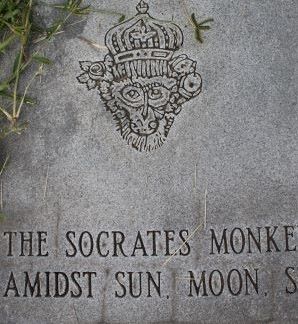
The Socrates Monkey
Eugene Walter (1921-1998), buried in the Church Street Cemetery in Mobile, Alabama, was an author, actor and artist. His work “The Socrates Monkey Seen Dancing in Midair” is depicted on his grave. His inscription partially reads:
Born in the land of lizard fever, in sweet lunacy’s county seat, This untidy pilgrim of the World, Lived by the Credo “When all else fails throw a party.”
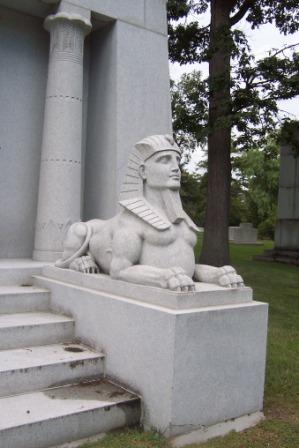
Sphinx
The sphinx is a mythical creature with the head of a human, a falcon, a cat, or a sheep and the body of a lion. The sphinx are considered guardians and often flank the entrances to Egyptian-themed mausoleums.

The Legend of St. Eustace
A stag with a cross attached to its antlers portrays “The Legend of St. Eustace.”
The legend goes that Placidus (Eustace’s name before he was baptized) was out hunting one day when he had a vision of Christ in the antlers of a stag. Placidus was awestruck and, commanded by the voice of God, converted to Christianity and changed his name to Eustace.
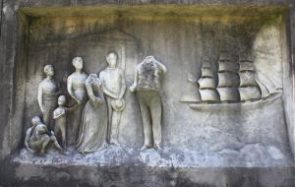
Story Stones
Story Stones are an oddity in the cemetery. They generally depict a violent death and were most often found carved in marble in the mid 1850’s. Some story stones depict a slice of the departed’s life, such as the abolitionist’s Charles Avery image of himself with slaves and a ship at left.

Thor’s Hammer
Mjölnir is the hammer of the thunder god Thor in Norse mythology, used both as a devastating weapon and as a divine instrument to provide blessings. The Veteran’s Administration recently added Thor’s hammer as an emblem representing atheists, oddly enough, under their “Emblems of Belief” section.

Triton
Triton is a Greek God of the sea, the son of Poseidon and Amphitrite. He is usually depicted as a merman.
Granary Burial Ground, Boston, Massachusetts
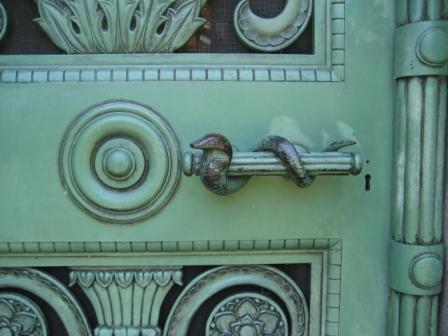
Uraeus
A snake with its head upright was an ancient Egyptian symbol for divine or royal authority.
Peter and Elise Schoenhofen Mausoleum Door
Graceland Cemetery, Chicago, IL